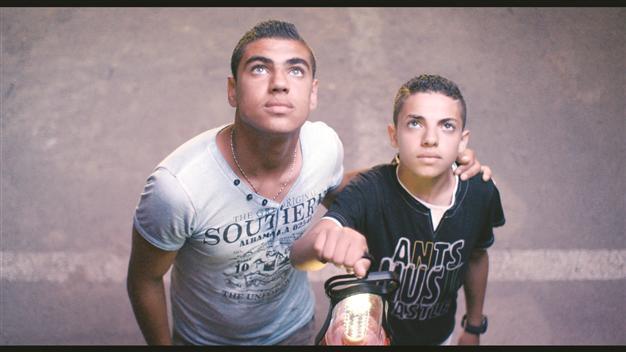Major survey exhibition by renowned Lebanese artist
ISTANBUL

A survey exhibition of renowned Lebanese artist Akram Zaatari, including the first phase of a new production, has opened at SALT Beyoğlu.
SALT Beyoğlu has devoted three entire floors to a major survey exhibition by Akram Zaatari, featuring a 16-year oeuvre of the Lebanese artist’s work.The exhibition hosts elements from different volumes of Zaatari’s work such as “The Uneasy Subject,” “28 Nights and A Poem,” “Earth of Endless Secrets” and “Time Capsule.” A video by the artist, “Beirut Exploded Views” (2014), is also part of the exhibition.
The floors of SALT Beyoğlu are divided thematically, bringing together projects and works from different periods from 1998 through 2014, presented in the same space based on the interests they share.
Works on the third floor take into account body postures and gestures as language, and include Zaatari’s first video installation, “Another Resolution” (1998), a re-enactment of photographic gestures rarely installed in its integral and complex form as an installation of 12 wall projections. Presented on the same floor is Zaatari’s most recent video “Beirut Exploded Views” (2014), where in a city post-apocalypse, people are able to communicate only through gestures and smart devices.
The second floor focuses on photographic archives comprising two major works, “On Photography, People and Modern Times” (2010), a display of an extensive research on vernacular photography that led to the creation of the Arab Image Foundation’s original collection of photographs from the “Middle East,” and “28 Nights and A Poem” (2006 - 2014), a multimedia installation that considers a photographic studio as a site of an ongoing excavation, displaying photographs, films and video recordings made in the studio.
The first floor is dedicated to Zaatari’s work on the act of excavation as a metaphor for concealing and revealing artifacts, namely archaeology and whatever its opposite could be. Elements of the “Time Capsule” create a frame for Zaatari’s inquiries into these areas of interest. The space opens with a display of Zaatari’s research on Osman Hamdi Bey’s excavation in Saida in 1887. The installation mixes interviews and key documents to present a case for a future work to be made.
Zaatari has played a critical role in developing the formal, intellectual, and institutional infrastructure of Beirut’s contemporary art scene. He was one of a handful of young artists who emerged from the delirious but short-lived era of experimentation in Lebanon’s television industry, which was radically reorganized after the country’s civil war. As a co-founder of the Arab Image Foundation, a groundbreaking, artist-driven organization devoted to the research and study of photography in the region, he has made invaluable and uncompromising contributions to the wider discourse on preservation and archival practice.
He has produced more than 40 videos, a dozen books, and countless installations of photographic material, all pursuing a range of interconnected themes, subjects, and practices related to excavation, political resistance, the lives of former militants, the legacy of an exhausted left, intimacies among men, the circulation of images in times of war, and the play of tenses inherent to various letters that have been lost, found, buried, discovered, or otherwise delayed in reaching their destinations.
The exhibition, organized with the support of funds from Zaatari’s receipt of the Yanghun Prize, South Korea, will continue until Feb. 2, 2015.
















